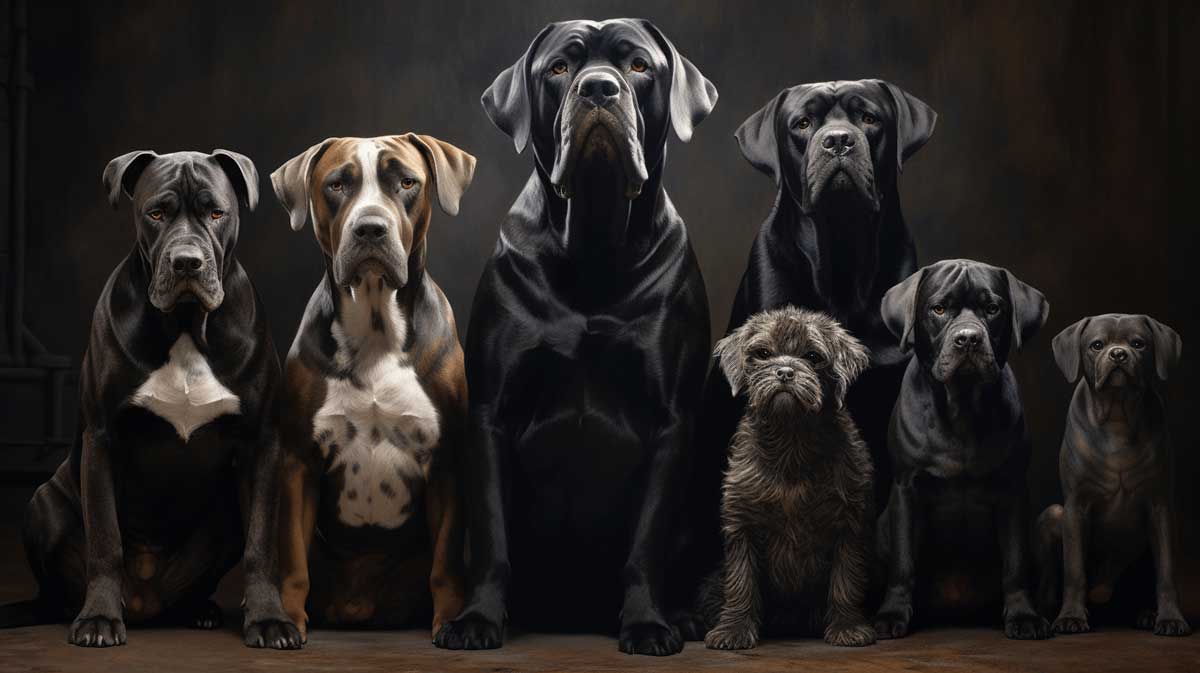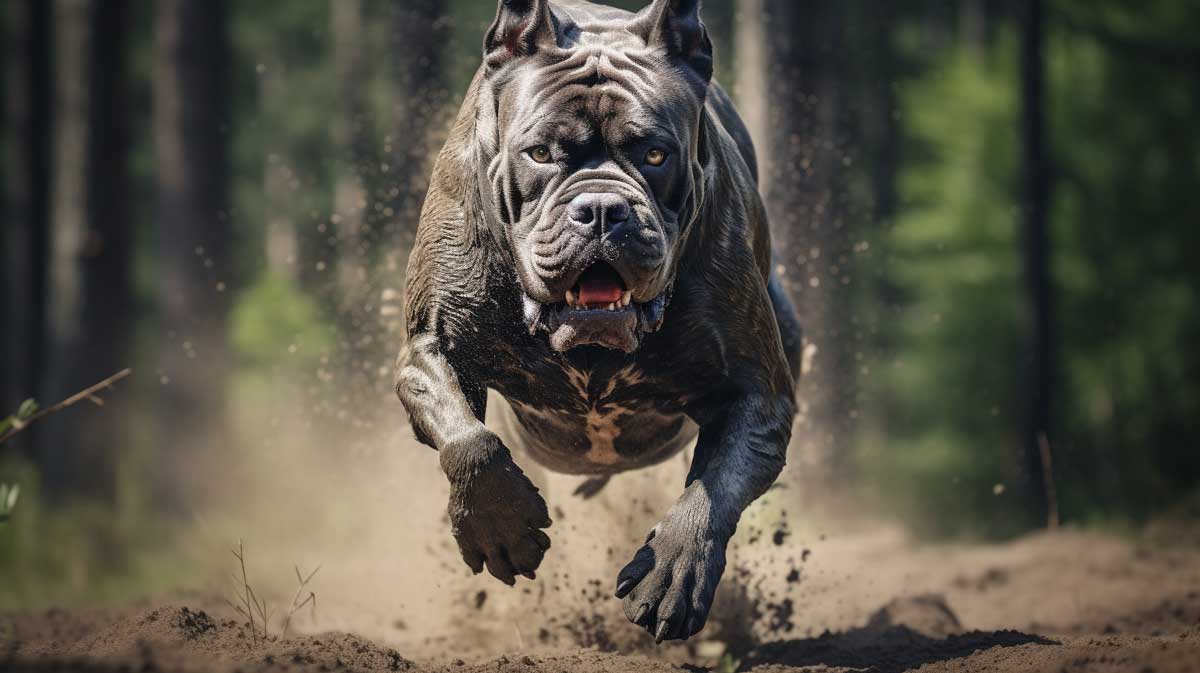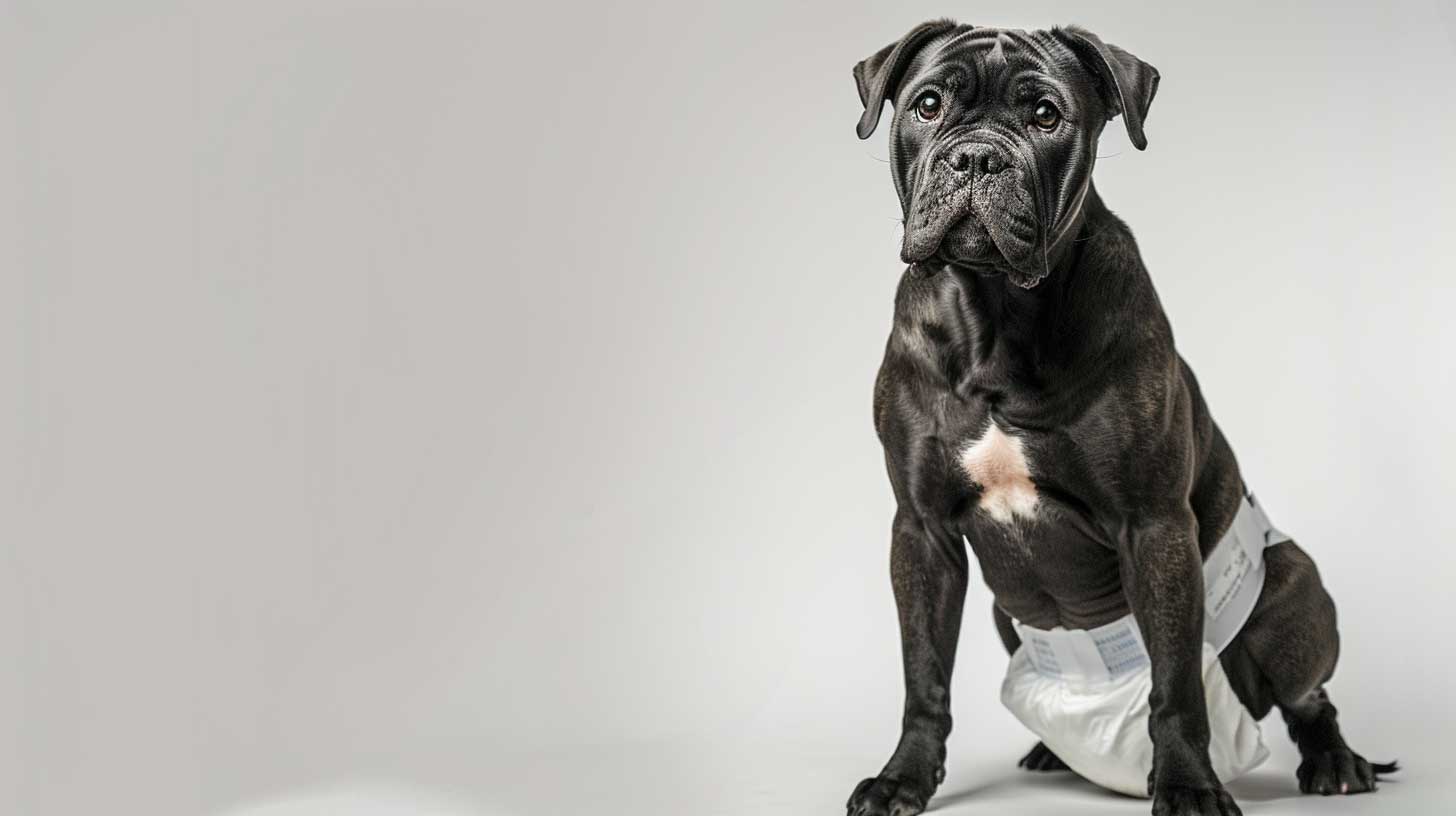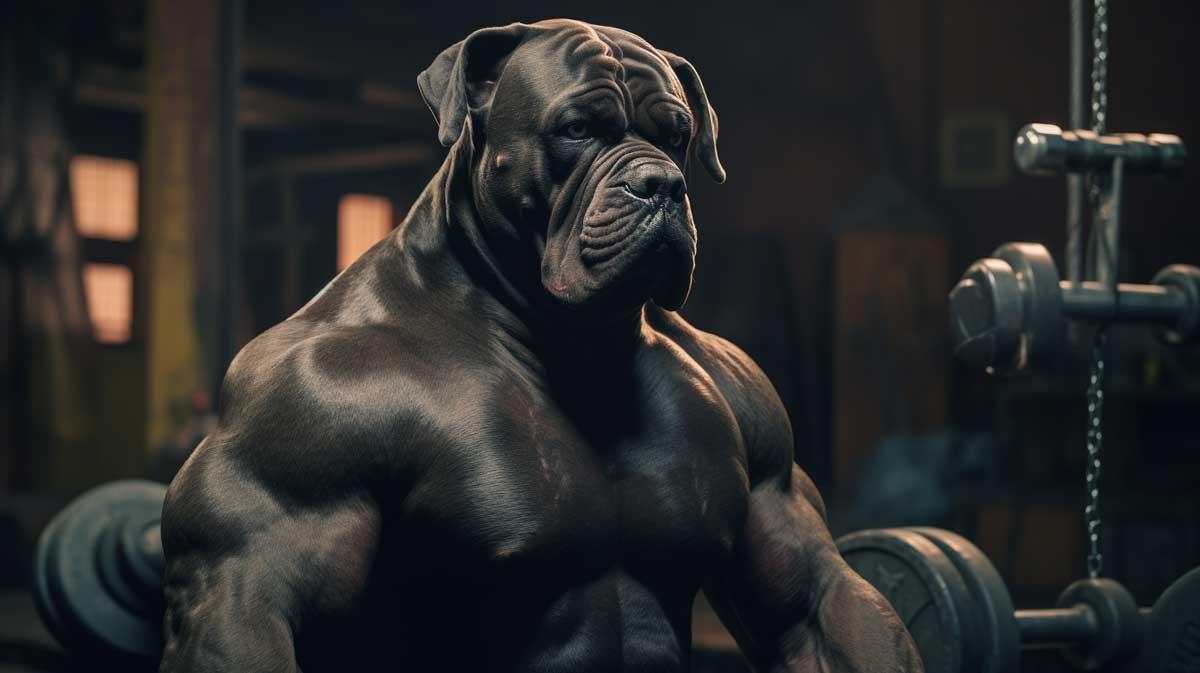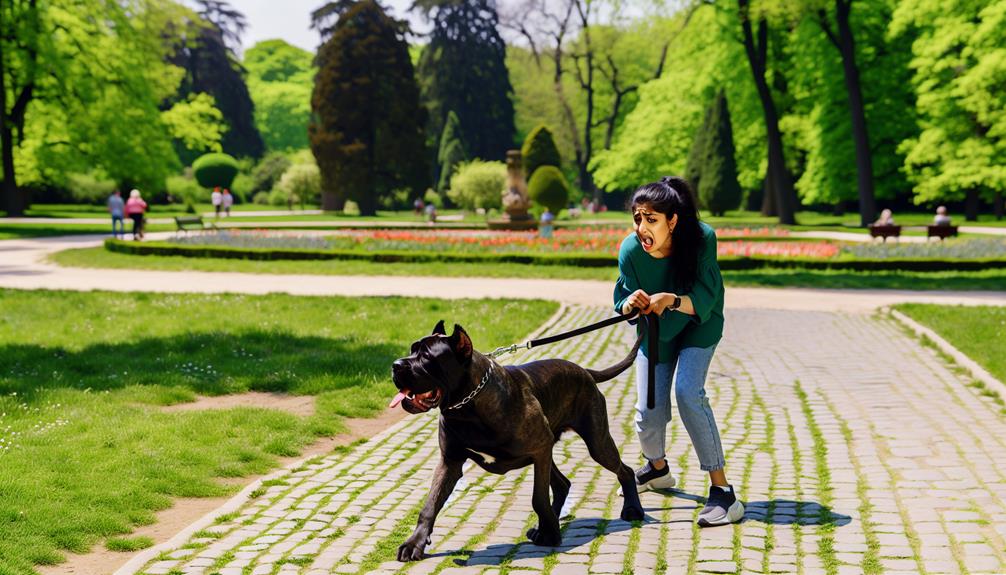As a Cane Corso breeder and owner, I’ve experienced my dogs’ behavior evolve positively with age. Initially energetic and curious, my Corsos matured into a calm, confident protector. Socialization and consistent training were key in shaping their demeanor. Challenges arose during adolescence, but with patience and leadership, his behavior improved. Signs of maturity brought heightened focus and loyalty. Understanding health and training aids in managing aggression as they age. Tailored mental stimulation and exercise routines maintain their well-being. Addressing separation anxiety requires sensitivity. Ultimately, age brings a new behavior level reflecting their growth and understanding.
Behavioral Changes in Young Cane Corsos
As a seasoned Cane Corso owner, I’ve witnessed firsthand the dynamic behavioral changes that young Corsos undergo as they mature.
When Cane Corsos are puppies, they’re full of energy and curiosity, often getting into mischief as they explore their surroundings. Proper training and guidance during this stage are essential to setting a solid foundation for their future behavior.
As they grow older, around 1-2 years of age, they start to become more calm, confident, and protective. Their instincts as guard dogs start to kick in, making them more vigilant and aware of their surroundings.
It’s fascinating to see how their personalities develop and how they evolve from playful pups to loyal and dependable companions.
Impact of Socialization on Behavior
Experiencing the behavioral shifts in young Cane Corsos highlights the significant influence socialization has on their overall demeanor and responses as they mature. Socialization plays a pivotal role in shaping a Cane Corso’s behavior, impacting how they interact with people, animals, and new environments.
Through positive social experiences, such as meeting different individuals and encountering diverse situations, Cane Corsos learn to navigate the world with confidence and adaptability. Proper socialization helps reduce fear, anxiety, and aggression, fostering a well-rounded and sociable companion.
It’s important to expose Cane Corsos to varied stimuli during their formative months to instill good behavior patterns that will carry into adulthood. Socialization lays the foundation for a balanced and well-adjusted Cane Corso.
Training Challenges in Adolescence
Guiding through the tumultuous waters of adolescence with a Cane Corso can present a myriad of training challenges, testing both patience and persistence.
As a Cane Corso owner, I’ve experienced firsthand the stubbornness and testing behaviors that can arise during this stage. Adolescence is a time when your dog is exploring boundaries, asserting dominance, and pushing limits.
It’s essential to remain consistent in training, reinforcing rules, and boundaries. The key is to establish yourself as the leader while maintaining a firm yet gentle approach. Focus on positive reinforcement techniques, consistency, and patience.
Signs of Maturity and Improved Behavior
Maturity in Cane Corso dogs brings about a noticeable transformation in their behavior, reflecting the positive impact of age on their development.
As my Cane Corso reached maturity, I observed a significant shift in their demeanor. They became more calm, confident, and well-behaved. Gone were the days of endless puppy energy and mischief; instead, I noticed increased focus, improved impulse control, and a stronger bond between us.
Their responses to commands became sharper, and they displayed a heightened sense of loyalty and protectiveness. With age, my Cane Corso exhibited a newfound sense of maturity that translated into more reliable and predictable behavior, making our relationship even more fulfilling and harmonious.
Handling Aggression in Aging Cane Corsos
Managing aggression in aging Cane Corsos requires a deep understanding of their behavior and proactive training strategies. As my Cane Corso ages, I’ve noticed changes in behavior that need careful attention. Addressing aggression in older Corsos involves consistent training, socialization, and positive reinforcement.
It’s vital to identify triggers that may lead to aggressive behavior and work on desensitizing the dog to those stimuli. Patience is key when dealing with aggression, as it can stem from various factors such as pain, fear, or territorial instincts.
Seeking professional help from a dog behaviorist or trainer experienced with handling aggression in large breeds like Cane Corsos can provide valuable insights and guidance. By addressing aggression early and using positive training methods, I’ve seen significant improvements in my aging Cane Corso’s behavior.
Health Influences on Behavior Development
In my experience with aging Cane Corsos, the significance of health on behavior development can’t be overstated.
- Physical Health: Ailments such as arthritis or hip dysplasia can lead to discomfort and irritability, affecting behavior.
- Mental Health: Cognitive decline or pain from underlying health issues can manifest in behavioral changes like confusion or aggression.
- Nutritional Health: Poor diet or nutrient deficiencies can impact a dog’s mood, energy levels, and overall demeanor, influencing their behavior.
Ensuring a Cane Corso’s health is in top condition is vital for maintaining their well-being and positively shaping their behavior as they age.
Mental Stimulation for Senior Cane Corsos
Having witnessed the profound impact of health on behavior development in aging Cane Corsos, it becomes evident that mental stimulation plays a pivotal role in enhancing the well-being and cognitive abilities of senior dogs.
As my beloved Cane Corso companion ages, I’ve learned that engaging him in mentally stimulating activities is just as important as physical exercise. Puzzles, interactive toys, and training sessions tailored to his abilities have proven to keep his mind sharp and his spirits high.
These activities not only provide mental enrichment but also strengthen our bond as we navigate his golden years together. It’s truly heartwarming to see how mental stimulation can invigorate his senses and keep him engaged, happy, and fulfilled.
Adjusting Exercise Routines as They Age
Adapting my Cane Corso’s exercise routines as they age has been an important aspect of maintaining their health and vitality. As my furry companions grow older, I’ve learned to tailor their physical activities to suit their changing needs.
Here are three key adjustments I’ve made to guarantee they stay happy and healthy:
- Shorter but More Frequent Walks: Instead of long, strenuous walks, I now opt for shorter but more frequent outings to prevent overexertion.
- Low-Impact Exercises: I incorporate more low-impact exercises like swimming or gentle jogging to keep their muscles toned without putting too much strain on their joints.
- Mindful Playtime: Engaging in mentally stimulating games during playtime helps keep their minds sharp while also providing a fun way to exercise.
Addressing Separation Anxiety in Older Dogs
To effectively address separation anxiety in older dogs, understanding the root causes and implementing gradual desensitization techniques is vital. Separation anxiety can manifest differently in each dog, but common signs include destructive behavior, excessive barking, and even self-harm.
It’s essential to create a safe space for your dog when you’re away and gradually accustom them to your leaving routine. Start by practicing short departures and gradually increase the time you’re away. Leave interactive toys or treats to keep them engaged while you’re gone. Additionally, consider using calming aids like pheromone diffusers or calming music.
Patience and consistency are key when helping your older dog overcome separation anxiety, so be understanding and supportive throughout the process.
Creating a Comfortable Environment for Aging Pets
Creating a cozy and safe environment is crucial for ensuring the well-being and comfort of aging pets. As our furry companions age, they may require additional support and consideration to maintain their quality of life. Here are three key ways to create a comfortable environment for your aging pet:
- Orthopedic Bed: Providing a soft and supportive bed can help alleviate joint pain and arthritis in senior pets.
- Easy Access to Food and Water: Placing food and water dishes at a comfortable height can make it easier for older pets to eat and drink without straining.
- Gentle Exercise Areas: Designate areas with non-slip flooring for gentle exercises to keep your aging pet active and maintain muscle strength.

